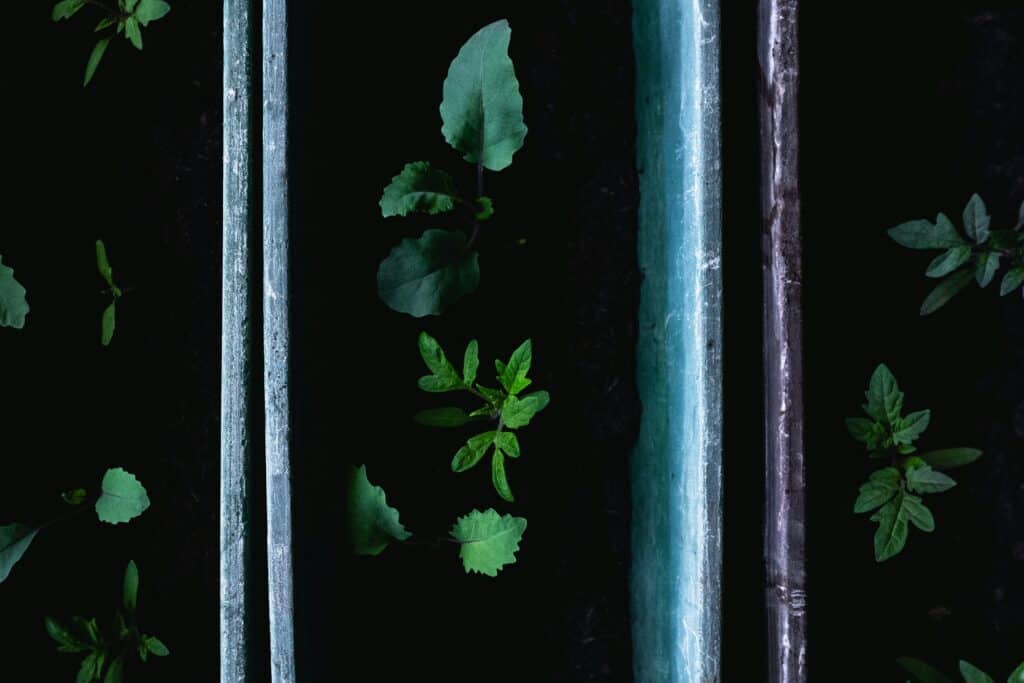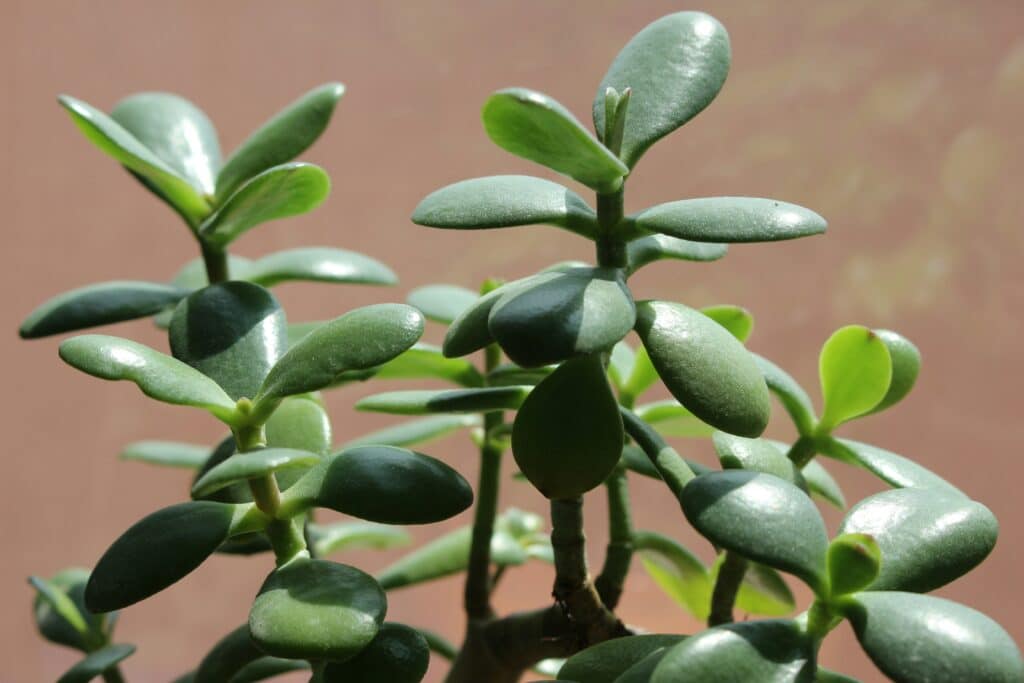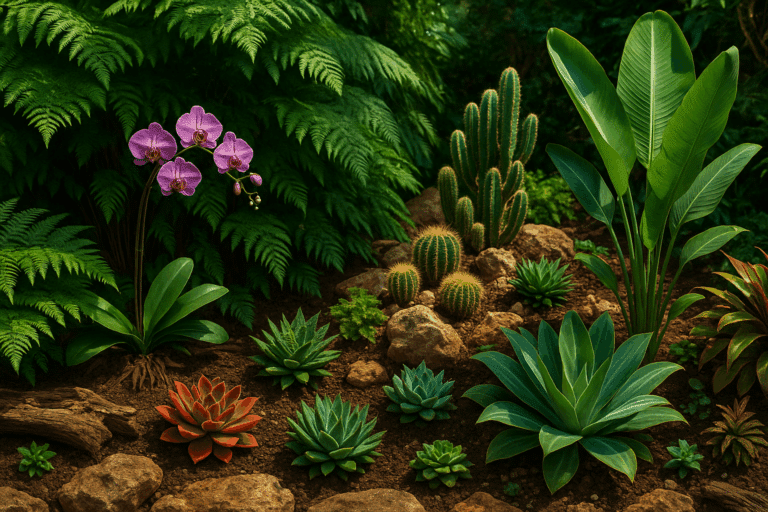As you immerse yourself in the wonders of the green universe, you are bound to discover not just beauty, but also symbolism and ancient wisdom. One such fascinating discovery is the Jade Plant, which is often associated with prosperity and resilience.😊
Commonly known as the Money Plant, the Jade Plant is renowned globally for its association with wealth and good fortune. This succulent, with its beautiful jade-green leaves, makes for a fantastic indoor plant and is believed to bring financial success to its grower.🍃💰

Our focus in this enlightening read will be on growing prosperity with a Jade Plant Window Grower. Not only will we delve into the cultural significance of this plant, but we’ll also guide you through its growth and maintenance. It’s a path of resilience and prosperity, much like the plant itself.🌱
The journey will further enlighten you about the fascinating folklore and beliefs associated with the Jade Plant. By nurturing this plant, it’s believed that you are inviting not just wealth, but also harmony and friendship into your home. With its effortless growth and enduring resilience, the Jade Plant can be a significant symbol in your life. 🏡✨
Stay with us as we embark on this exciting exploration of the Jade Plant and its incredible potential to bring about a growth of prosperity. Learn how to grow and care for this hardy plant, and in the process, perhaps invite a little bit of that famed good fortune into your own life. Let’s cultivate resilience and wealth, one Jade Plant at a time. 🌿🌟
Understanding the Jade Plant’s Cultural and Symbolic Legacy
The reverence for the Jade Plant extends far beyond its lush appearance. In many Asian households, particularly in China, it is not uncommon to see Jade Plants strategically placed at entryways, offices, or living rooms. Rooted in ancient traditions, it has become an enduring symbol of financial well-being and harmonious living. The idea is that, like jade stone itself, the plant represents value, purity, and a steady flow of prosperity.
According to Feng Shui principles, the Jade Plant emits a strong energy of growth. Its round, coin-shaped leaves symbolize wealth and are believed to activate financial luck when placed in the “wealth corner” of the home—traditionally the southeast section of your living space. This symbolism aligns well with modern perspectives on mindfulness, intention-setting, and creating positive affirmations through one’s environment.
More than just a piece of decor, the Jade Plant can serve as a living vision board—a daily reminder of one’s goals for success, abundance, and health. With proper positioning and care, it’s thought to harmonize your space, allowing energy (or “chi”) to flow freely, which, in Feng Shui, is essential for a flourishing life.
How the Jade Plant Encourages Mindful Living
One of the lesser-known benefits of having a Jade Plant in your home is the practice of mindful care. While the plant requires minimal upkeep, its subtle needs teach patience, attentiveness, and rhythm. Watching the thick, succulent leaves develop over time fosters an appreciation for slow, sustainable growth, paralleling the journey of building a healthy financial or personal life.
Jade Plants are particularly helpful in spaces where calm and concentration are needed. This includes home offices, meditation rooms, or bedrooms. Their calming green hues and quiet presence encourage a grounded and peaceful atmosphere. For those who live in busy cities or high-energy environments, a Jade Plant on the windowsill can serve as a grounding influence.
Sunlight and Soil: The Essentials of a Thriving Jade Plant
To grow a healthy and thriving Jade Plant, light and soil are the two most essential components. Ideally, your Jade Plant should receive at least four hours of sunlight daily. A south-facing window is usually ideal, though east or west exposures can work well too, depending on your location and indoor conditions.
The soil should be well-draining, mimicking the plant’s natural environment. A commercial succulent or cactus mix works well, but you can also make your own by blending potting soil with perlite or coarse sand. Drainage is crucial, as excess moisture can cause root rot, one of the most common problems with jade cultivation.
Watering should be infrequent but thorough. It’s best to allow the soil to dry out completely between watering. During winter, reduce watering even more, as the plant goes into a semi-dormant state and requires less moisture.
Fertilizing and Growth Support
Though Jade Plants are low maintenance, they still benefit from occasional feeding. Use a balanced liquid fertilizer once a month during the growing season (spring and summer). Avoid fertilizing during the winter months, when the plant is naturally less active.
As for support, while Jade Plants don’t require trellises or stakes, it’s important to rotate the pot every few weeks to ensure even growth and prevent the plant from leaning toward the light source. Pruning can also help manage its shape and encourage branching, which results in a fuller, bushier appearance.
Repotting and Longevity
Another reason Jade Plants are associated with resilience is their remarkable longevity. With proper care, they can live for decades and often become heirloom plants, passed from one generation to the next.
Repotting is generally only necessary every two to three years, or when the plant becomes root-bound. Choose a pot that’s only slightly larger than the current one, and ensure it has ample drainage holes. Repotting is best done in the spring, just before the growing season begins.
Older Jade Plants develop thick, woody stems, which lend them the appearance of miniature trees. This makes them an excellent candidate for bonsai-style pruning, adding yet another layer of aesthetic and symbolic beauty to their presence.
Common Issues and Troubleshooting Tips
While generally hardy, Jade Plants can sometimes encounter issues. Soft, mushy leaves usually indicate overwatering, while wrinkled or shriveled leaves suggest underwatering. If leaves start to drop, examine the plant’s light exposure and watering frequency, and adjust accordingly.
Pests are rare but can occur, especially in dry indoor conditions. Mealybugs and spider mites are the most common culprits. Wipe leaves with a damp cloth or spray with neem oil to treat infestations.
Enhancing Indoor Spaces with the Jade Plant
The versatility of the Jade Plant makes it suitable for nearly every room in the home. In kitchens, its vibrant green color adds a fresh touch to countertops or sunny windowsills. In bedrooms, it contributes to a serene atmosphere without demanding constant attention. In home offices, it can be a powerful visual motivator for professional growth and success.
For those with minimalist decor, the Jade Plant fits perfectly with its clean lines and uncluttered silhouette. For more eclectic interiors, it provides a grounding counterbalance to bold colors and patterns.
You can even enhance the plant’s symbolism by placing coins or crystals around its base, or using decorative pots with meaningful inscriptions. This adds a layer of personal energy and intention to your plant-care routine.
Seasonal Considerations and Long-Term Planning
One of the most exciting things about growing a Jade Plant is watching it evolve over the seasons. In spring and summer, you’ll notice new growth tips and thicker foliage. Fall is a good time to prune or propagate, while winter is a rest period for the plant.
Over time, with continued care, your Jade Plant can grow quite large. Some indoor specimens reach over three feet tall, and when conditions are right, they may even produce small, star-shaped white or pink flowers—a rare but rewarding event.
Planning for the long term, consider propagating your plant to create gifts for friends and family. A Jade cutting not only passes along a beautiful, hardy plant but also the symbolic message of resilience and prosperity—making it a heartfelt, meaningful gesture.lants. It’s also essential to ensure that your plant gets plenty of sunlight, as lack of light can lead to the loss of the characteristic green color.
The Benefits of a Jade Plant Window Grower
Practical Benefits
From a practical standpoint, a Jade Plant is an excellent choice for those who desire a low-maintenance houseplant. Its ability to thrive in various light conditions and resistance to most plant diseases make it an ideal plant for beginners and experts alike. Additionally, the Window Grower utilizes vertical space, making it perfect for apartments or homes with limited space.
Symbolic Benefits
Symbolically, having a Jade Plant in your home or office can serve as a constant reminder of your financial goals. As the plant grows and flourishes, so too does the symbol of your wealth and prosperity. Moreover, in Feng Shui, it is believed that placing a Jade Plant near the entrance of a business brings fortune and success.
Enhancing Prosperity with the Jade Plant
While the Jade Plant symbolizes wealth and prosperity, it’s important to remember that the plant itself does not directly cause financial success. Rather, it acts as a reminder of our financial goals and resilience.

Feng Shui Tips
In Feng Shui, the placement of the Jade Plant is crucial. It is often placed near the entrance of businesses to attract wealth. For the home environment, place your Jade Plant in the southeast direction of your living room, as this is considered the wealth area. However, avoid placing the Jade Plant in areas like the bathroom or bedroom as these are associated with negative energy for this plant.
Beyond Greenery: A Living Manifestation of Intention
The Jade Plant Window Grower is not only a charming addition to your indoor garden, but it also serves as a living reminder of discipline, growth, and consistency. Its presence by your window creates an ever-evolving scene—sunlight bathing its fleshy green leaves, new growth emerging from its tips, and the quiet, powerful energy it exudes as it matures.
For many growers, the routine of caring for the Jade Plant becomes a daily ritual of reflection. As you water it, inspect its leaves, or gently rotate it for balanced growth, you are reminded to care for your own dreams and responsibilities with the same attentiveness. The act becomes symbolic, reinforcing the idea that prosperity—financial or otherwise—requires patience, effort, and nurturing.
Creating an Abundance Mindset Through Cultivation
There’s something deeply philosophical about tending to a Jade Plant. It cultivates more than just foliage—it cultivates mindset. Each leaf that thickens and thrives is evidence that with the right conditions and care, abundance is possible. The Jade Plant doesn’t demand perfection. It thrives despite occasional neglect, just as people do. In this way, it quietly encourages resilience and grace.
An abundance mindset doesn’t stem from how much you possess materially, but from how you value progress, how you adapt, and how you grow through adversity. The Jade Plant—strong, undemanding, ever-growing—reflects this principle perfectly. It teaches that prosperity isn’t a windfall. It’s a gradual, steady process rooted in thoughtful actions and the ability to weather occasional droughts.
Cultivating Financial Intentions and Symbolic Placement
In Feng Shui, intention is everything. Placing the Jade Plant in the southeastern corner of your home or office isn’t just about tradition—it’s about aligning space with your goals. The southeast is the direction of wealth and abundance, and placing a living, thriving symbol of prosperity in this corner can amplify your intentions.
Coupled with visual affirmations, such as placing meaningful tokens at the plant’s base—coins, gemstones like citrine, or motivational notes—you can create a dedicated wealth altar or corner. Over time, this space becomes a sanctuary of intention, reminding you not only to hope but to act with consistency and clarity.
Emotional and Psychological Benefits of Plant Parenthood
The act of growing a Jade Plant engages more than just the hands; it engages the heart and mind. Studies in horticultural therapy show that interacting with plants can reduce stress, improve focus, and even elevate serotonin levels. For individuals managing busy lifestyles or high-stress environments, the simple act of caring for a Jade Plant can provide a grounding, stabilizing routine.
Furthermore, witnessing a plant’s success under your care builds confidence. It reminds you that you are capable of nurturing life, managing responsibilities, and achieving growth—both literally and metaphorically. That’s why many people choose the Jade Plant as a symbolic companion during new ventures: launching a business, moving into a new home, or starting a journey of personal healing.
A Legacy of Growth: Gifting the Jade Plant
The Jade Plant’s value isn’t just in its symbolism or beauty—it also lies in its generational continuity. Its ability to be propagated through leaf or stem cuttings means it can be shared endlessly. A single healthy mother plant can produce dozens of offspring over the years, each carrying the energetic imprint of the original.
Gifting a Jade Plant cutting is a deeply thoughtful gesture. It communicates your wishes for the recipient’s success, stability, and well-being. Whether it’s a housewarming gift, a business milestone, or a birthday present, a Jade cutting offers far more than greenery—it offers intention.
Family traditions can emerge around these gifts, with children learning how to repot and raise their own Jade plants from cuttings handed down by parents or grandparents. In doing so, the plant becomes a symbol not just of financial prosperity, but of continuity, family history, and shared values.
Aesthetic and Practical Roles in Modern Interiors
While its symbolism is powerful, the Jade Plant also has purely practical benefits that shouldn’t be overlooked. Its ability to purify the air, store water, and tolerate dry indoor conditions makes it an ideal houseplant, especially for urban dwellers or beginners.
From a design perspective, the Jade Plant offers a sculptural quality. Its thick stems and rounded leaves mimic bonsai forms, making it an elegant choice for minimalist, modern, or even rustic interiors. Placed on a windowsill, a bookshelf, or a sleek stand, it complements a wide range of home aesthetics.
Unlike trailing or high-maintenance tropical plants, the Jade Plant’s growth is upright, compact, and easy to manage. It can become a central feature in a sunroom or an accent piece on a desk. With so many potting options available—ceramic, concrete, terracotta—it’s easy to style your Jade Plant to suit any mood or motif.
Propagation and Sustainability in Jade Plant Care
Part of what makes the Jade Plant so enduring is its ease of propagation. Even a beginner can learn to take a leaf or stem cutting, allow it to callous, and root it in well-draining soil. Within weeks, new growth appears—a satisfying reward for patience and gentle care.
This ability to multiply offers an inherent sustainability to the Jade Plant. Unlike ornamental plants that must be purchased anew, a healthy Jade can continually reproduce, offering self-sufficiency and an ever-growing plant collection without additional cost or environmental impact.
In times where sustainability and resourcefulness are increasingly valued, the Jade Plant stands out as a green ally. Its low water requirements, adaptability, and potential to grow without synthetic fertilizers make it an eco-friendly option for conscious gardeners.
The Jade Plant as a Teacher
Perhaps most poignantly, the Jade Plant teaches us timing and temperance. It doesn’t grow fast—but it does grow reliably. It doesn’t bloom often—but when it does, it’s a special event. It asks for little but offers much. And in this way, it mirrors the best qualities we can strive for in life: resilience, balance, patience, and purpose.
A withered leaf doesn’t mean failure—it signals an opportunity to adjust care. A sudden burst of growth reminds us that effort accumulates. A cutting that roots and thrives under our hands is a physical manifestation of potential turned into reality. All this from a plant quietly basking in the sun on your windowsill.



